Gibson Biddle shares customer-centric product strategy lessons from Netflix

Whether you binge-watched Tiger King, The Queen’s Gambit, or The Baby-Sitters Club, chances are that Netflix was a defining part of your pandemic life (and probably the Before Times, too). With 220 million members worldwide, Netflix has become a household name, (virtual) watercooler conversation fodder, and a familiar part of our daily routines.
But it didn’t start that way. In its early days, Netflix was a DVD rental site with just 2,600 movies in its catalog.
Telling the story of Netflix involves understanding how the company prioritized personalization, says Gibson Biddle, a Product Advisor and former VP of Product at Netflix.
Gibson recently shared his insights into customer-centricity at Netflix at the 2021 Product Excellence Summit. Find the highlights below or head here to watch the entire presentation.
Using the DHM model to drive product strategy
The product leader’s job, says Gibson, is to Delight customers in Hard to copy, Margin-enhancing ways. This approach is known as the DHM model. It essentially means that you want to help your company make more money so you can invest in building an even better product in the future.
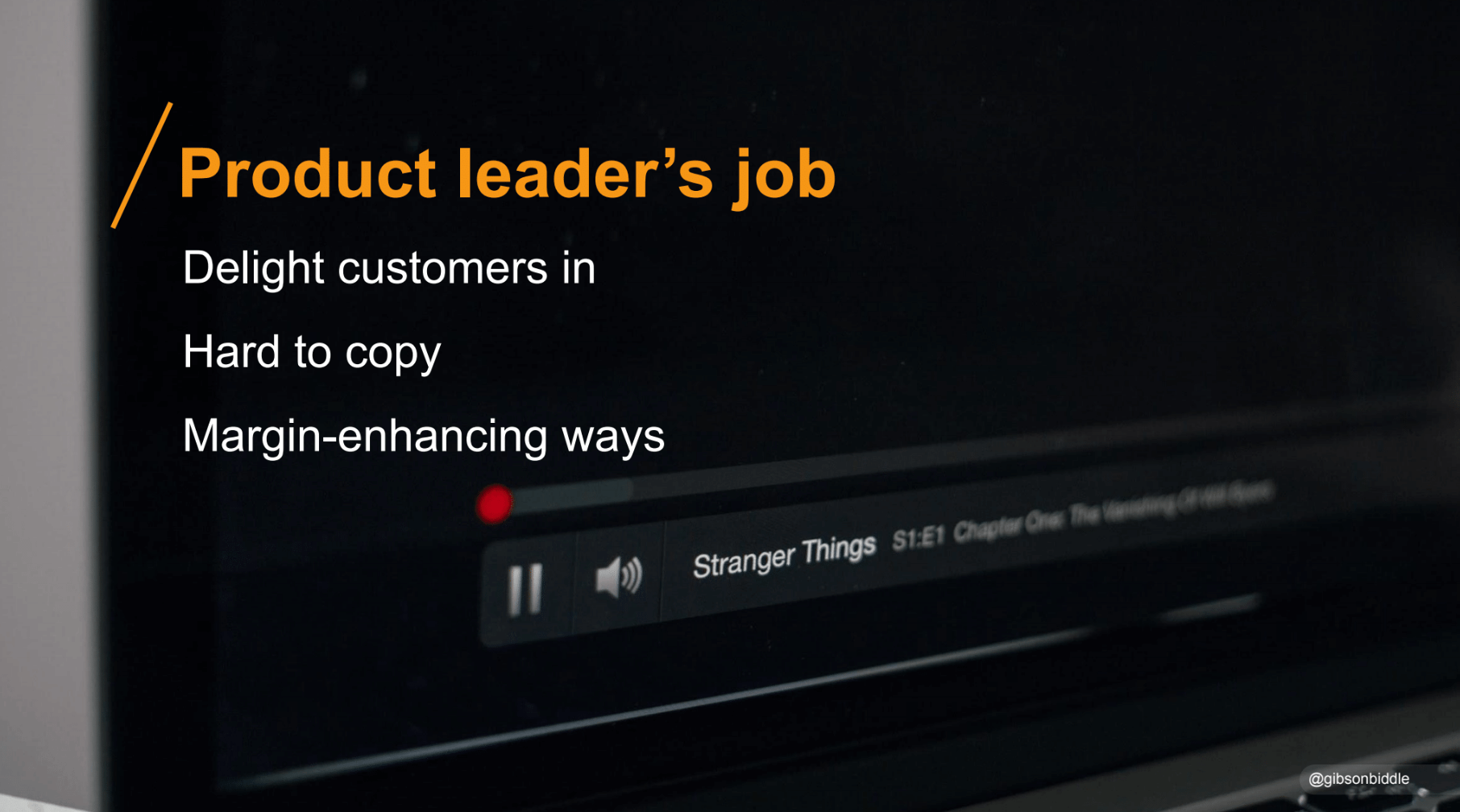
Product leaders must walk the line between delighting customers and making a positive impact on margins. As Gibson puts it, “Netflix customers might say, ‘Just charge me half the money. That would be delightful!’ But that’s not going to support enough profit to make the product better.”
So simply slashing prices doesn’t fit the DHM model. But what about creating a “perfect” experience?
Creating the perfect new release experience
Imagine it’s 2005. Streaming doesn’t exist and no one has even heard the term “binge-watching” yet. Netflix is sending DVDs to around 1 million members through the mail. Customers create a queue of movies they want to rent, so when their first choice isn’t available, they simply get their second, third, or fourth choice.
When Netflix surveys customers about how to improve the service, one of the top answers is shortening the amount of time it takes to get new releases. Due to high demand, most customers have to wait several weeks (or more) to get the new releases at the top of their queues.
This seemed like a promising opportunity for delighting customers, but it was unclear whether it would enhance margins, so Netflix set up a test. They created a group of 10,000 customers who would get a “perfect new release” experience. Any new release they requested would be put in the mail to them the next day.
The big question they were trying to answer was: Will retention improve as a result? Would the enhanced experience be a big enough change to prevent customers from canceling their subscriptions?
The answer was… yes. There was a slight dip in the number of customers who canceled. Cancels went from 4.5% in the control group to 4.45% in the test group. Netflix calculated that if they rolled this change out to all 1 million customers, it would prevent 5,000 customers from churning. “Saving” these 5,000 customers was worth $1 million to the company. They calculated this number based on the number of customers (5,000) x lifetime value of customer ($100) x word of mouth factor (2).
But, in order to acquire the inventory that would allow them to roll out the “perfect new release” experience at scale, it would cost the company $5 million. While this enhanced experience might delight customers, it would actually be harmful to the company’s margins. Ultimately, Netflix chose not to roll out the perfect new release experience.
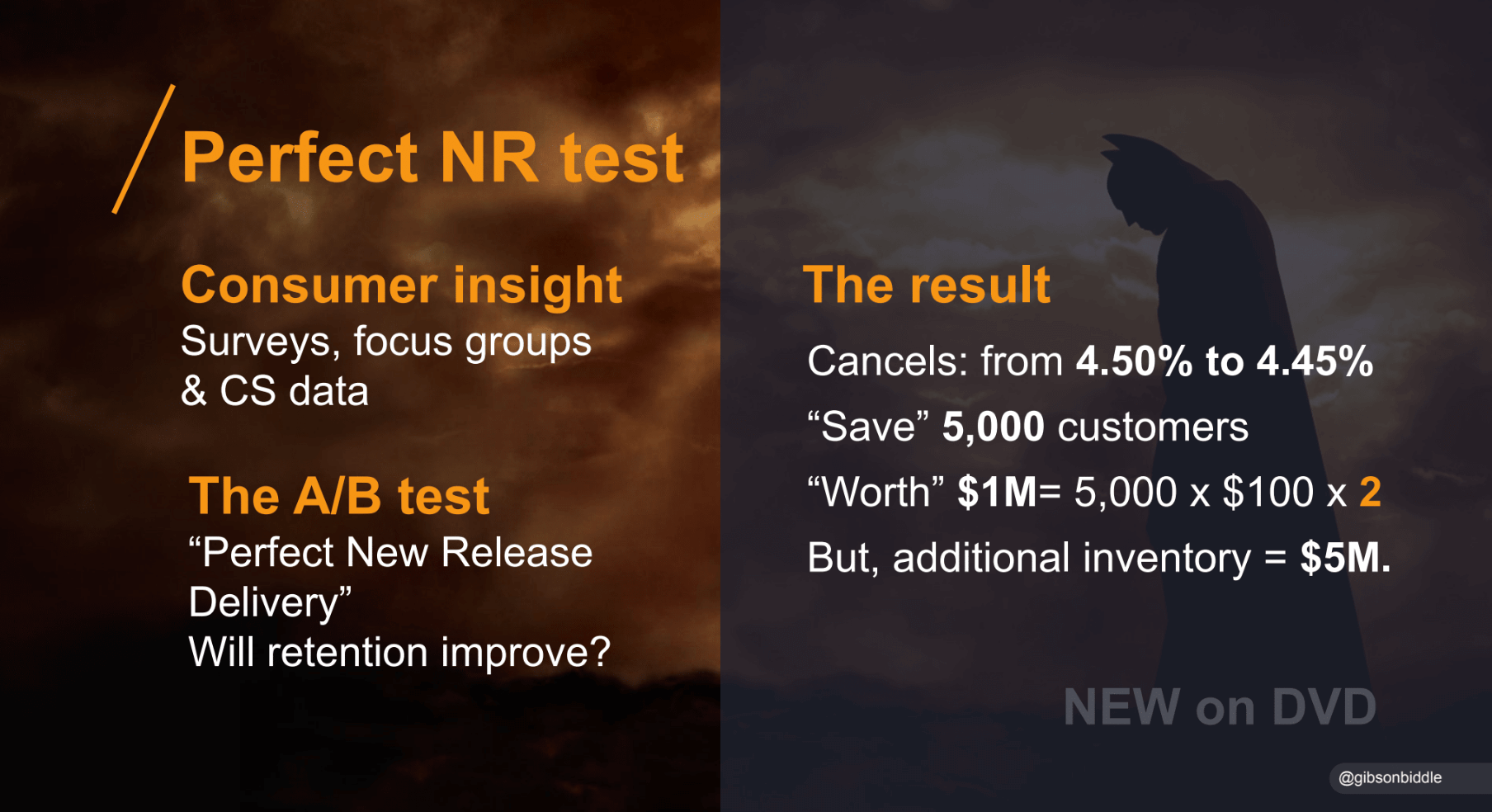
If you’re interested in using the DHM model, you might find it useful to create a scoring sheet to help you compare and contrast different ideas. Gibson shared this example from Netflix, noting that the chart is color-coded. Green strategies are the ones that tick all the boxes and are most likely to be implemented, yellow strategies tick some but not all boxes and may not be implemented, and red strategies don’t tick the boxes or have not yet been validated.
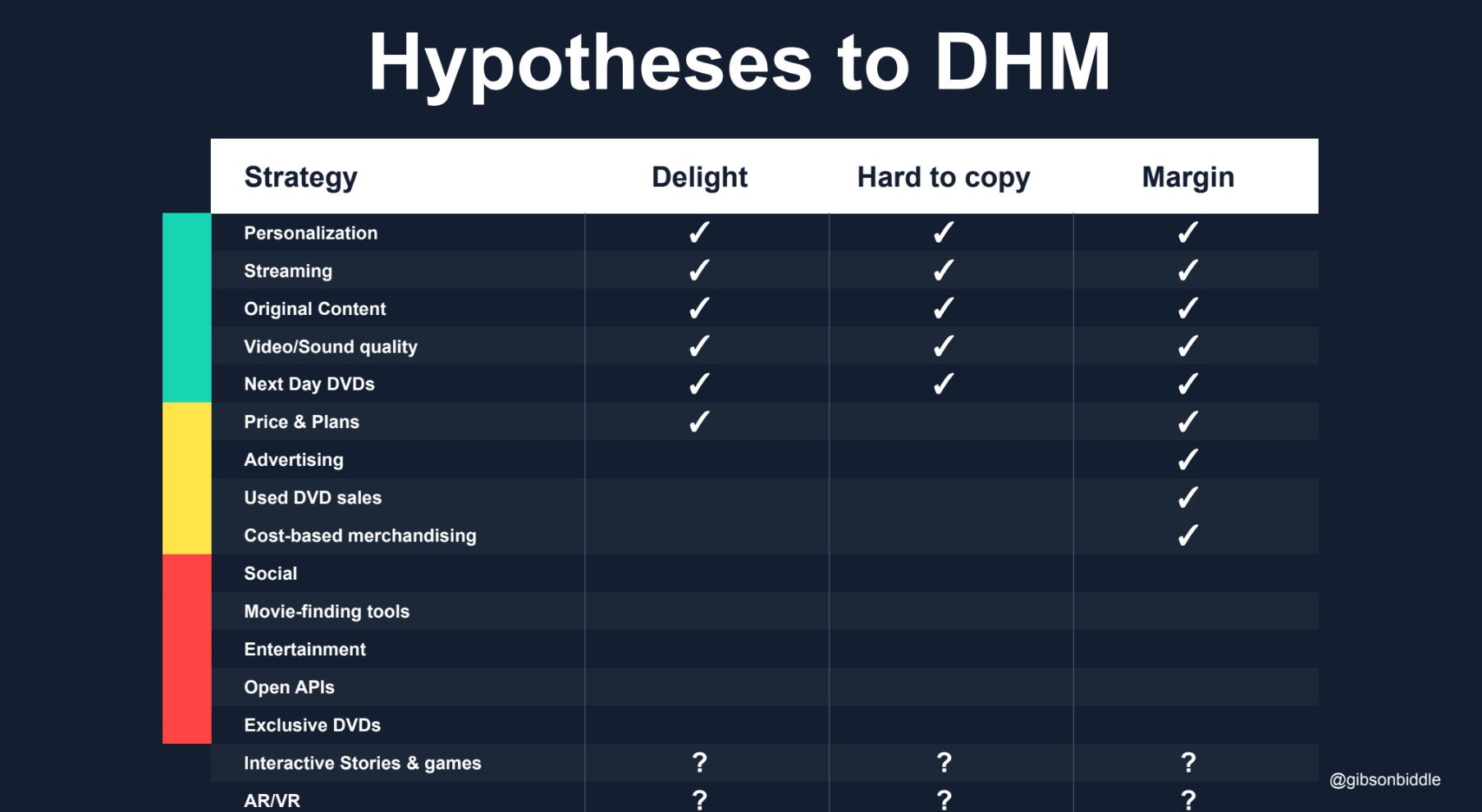
Putting consumer science into practice
“Consumer science is really a fancy way of saying ‘the scientific method,’” explains Gibson. You start with a hypothesis, run experiments to collect data, and then analyze the results to come up with a conclusion.
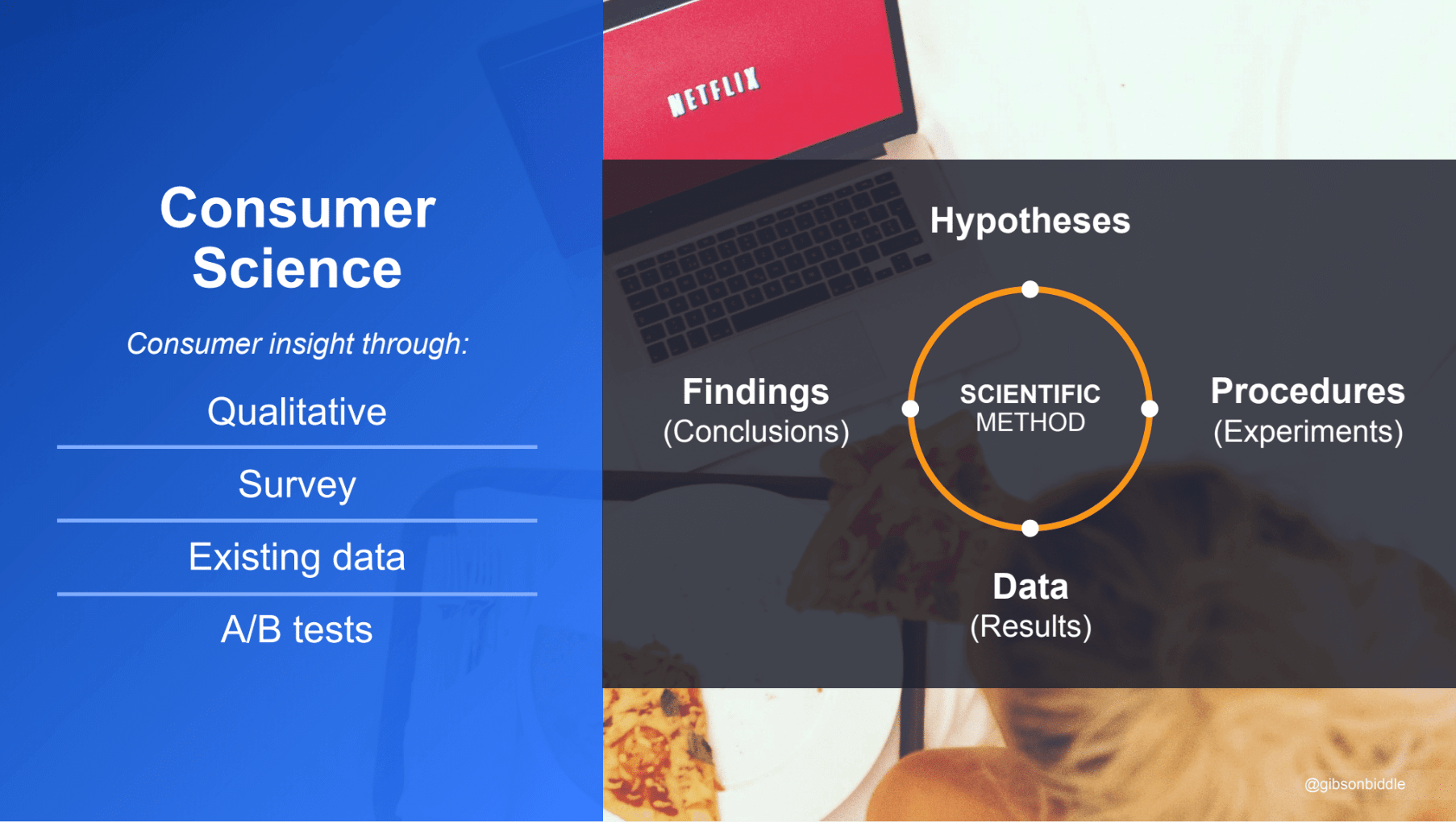
Getting explicit data through the Star Bar and Ratings Wizard
To look at an example of how Netflix put its personalization product strategy into practice, Gibson takes us back to Netflix in 2005 again.
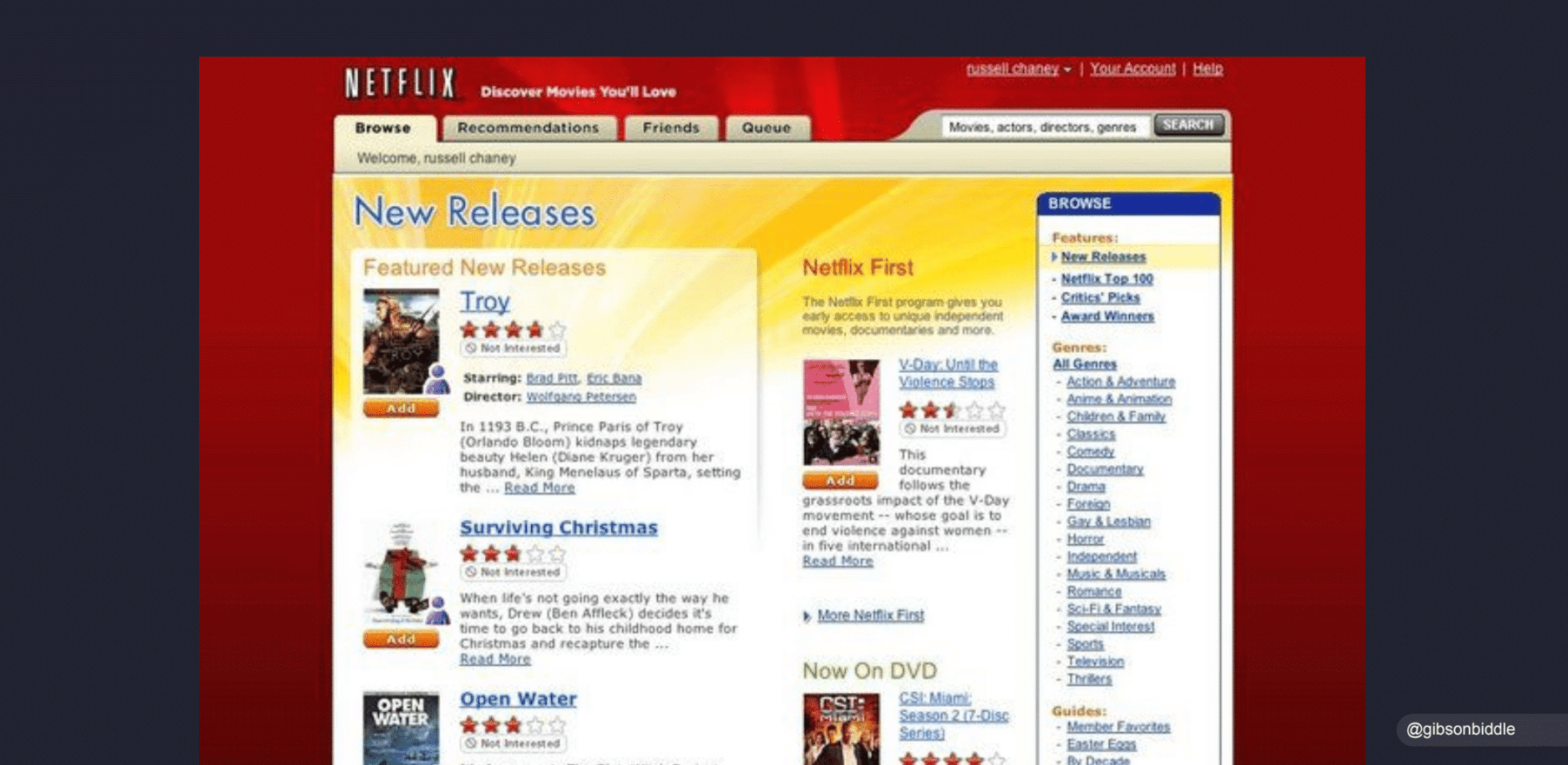
“We were doing a sucky job,” he says. “We put expensive new releases, which we couldn’t deliver, on the home page. Netflix First was our first experiment in original content, which failed in the DVD era, and we used the word ‘recommendations,’ which is a bad idea because it’s not human language.”
Their product strategy when it came to personalization had four main hypotheses: they would get explicit data by asking customers to rate lots of movies, implicit data (when streaming became possible), matching algorithms, and higher quality movies.
There were metrics that mapped to each strategy, and in turn, tactics that mapped to each of those metrics, shown here.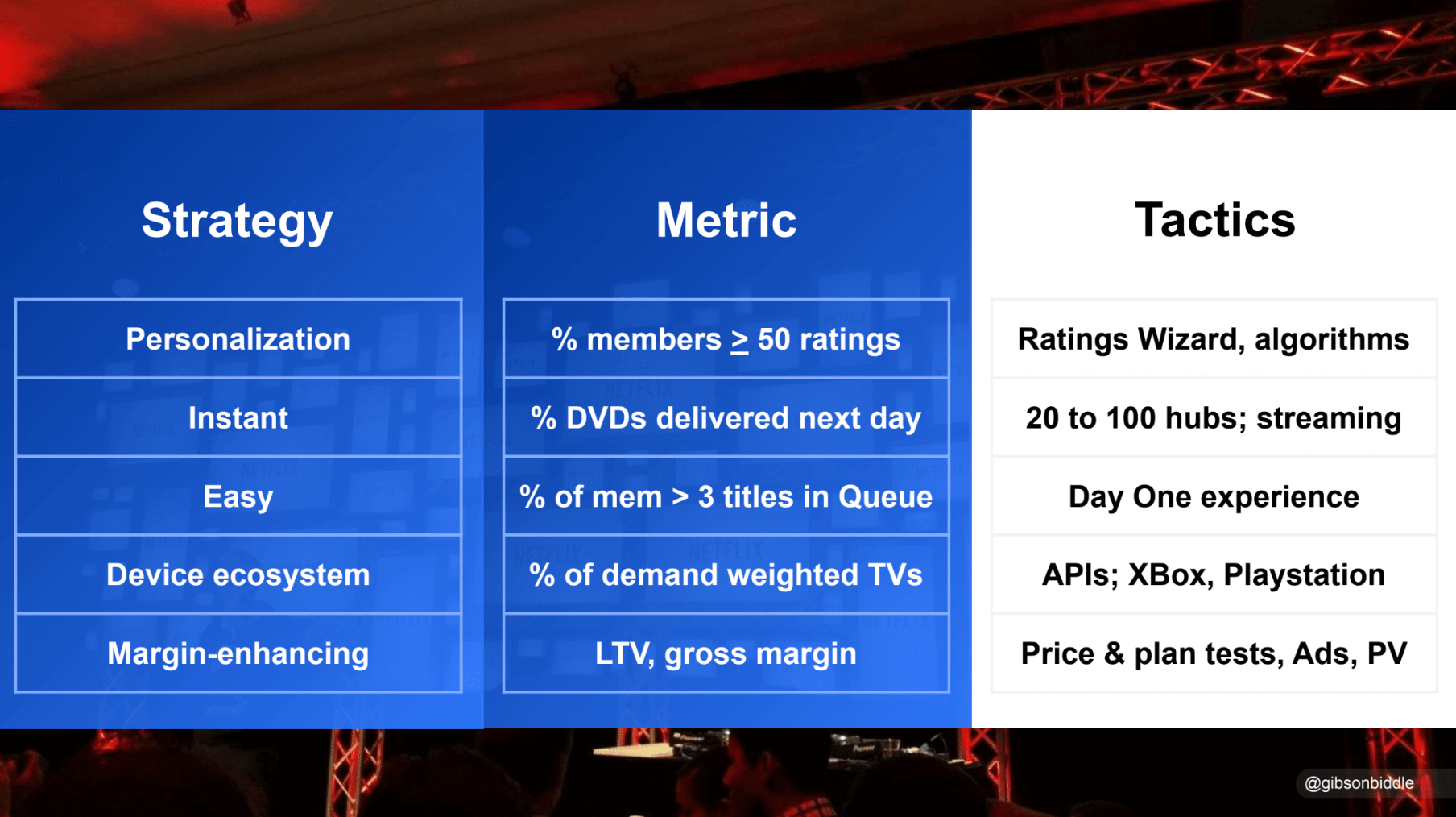
The first strategy, collecting explicit data, relied on asking customers to rate their recent rentals to “reveal” two movies they’d love. Their goal was to get customers to rate at least 50 movies. And it worked!
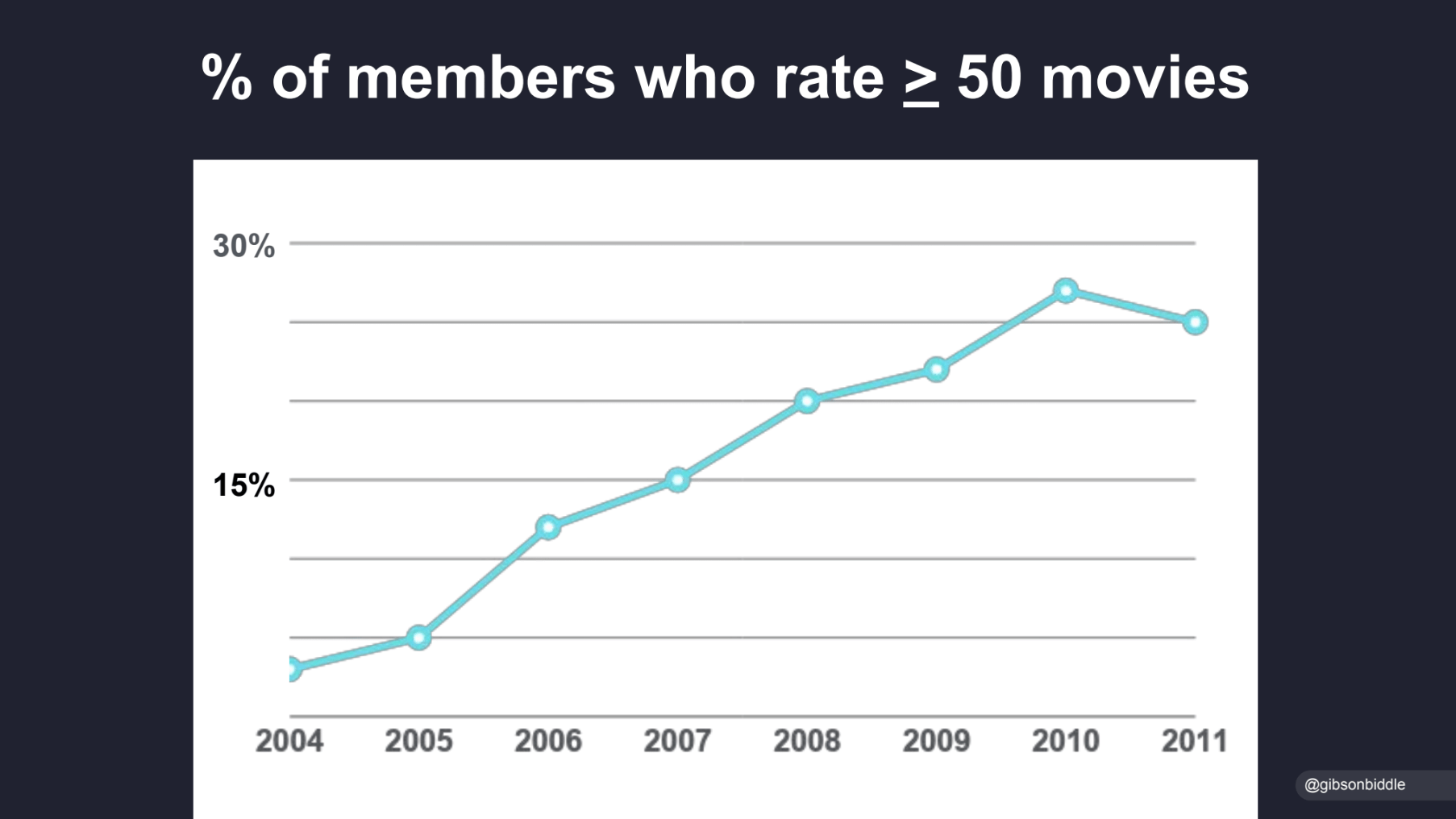
The percentage of customers who rated at least movies steadily grew, reaching a high of 28% in 2010, only dipping in 2011 when streaming began to take off.
Another tactic they tried out was the Ratings Wizard. When customers clicked on the “Movies You’ll ♥” tab, they’d see the following message: “The more you rate, the better we’ll do at finding movies you’ll love.”
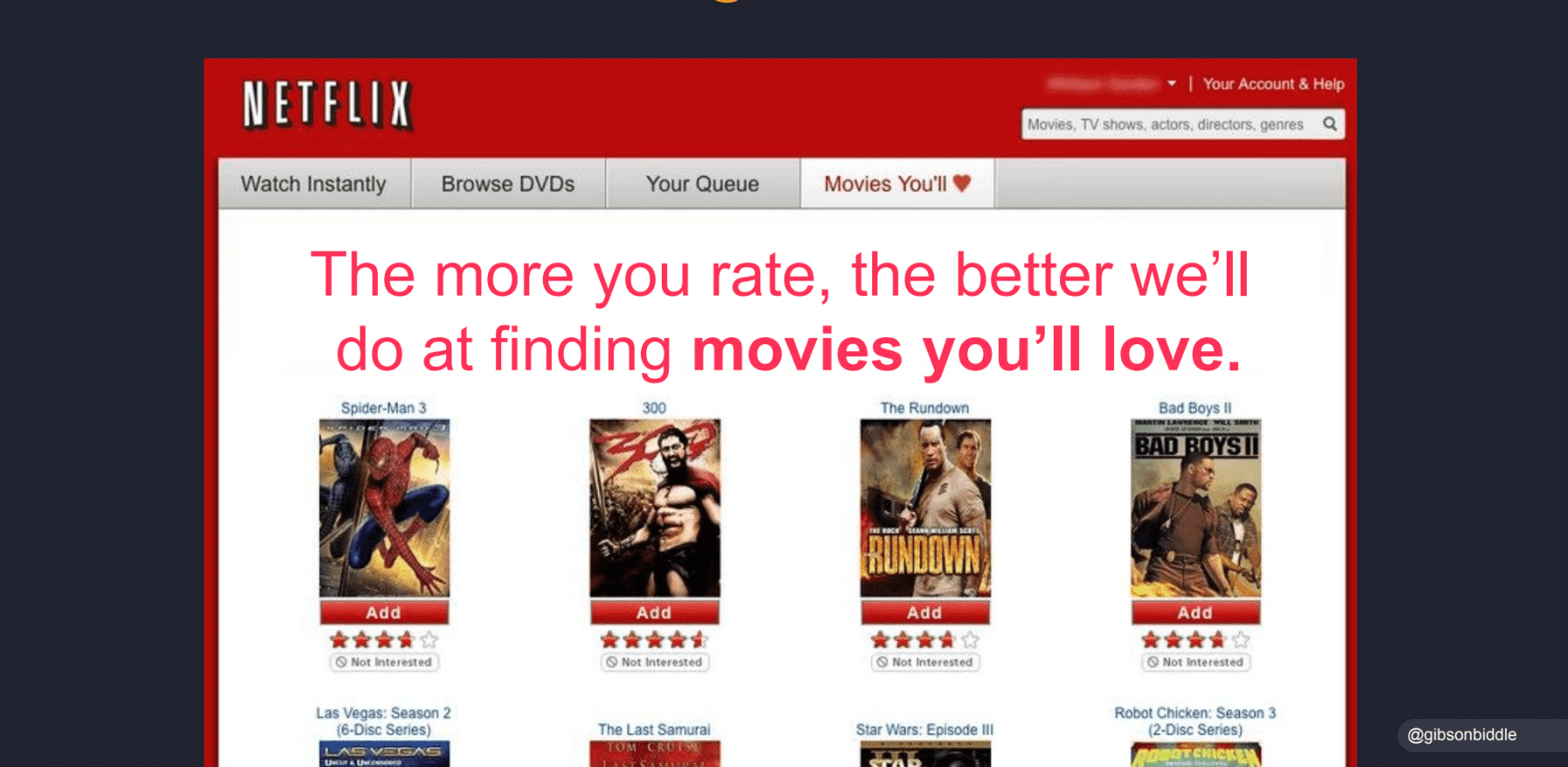
This tactic was also hugely successful. “People would binge-rate dozens of movies at a time,” says Gibson. Netflix ultimately collected around 10 billion star ratings.
A case study to consider: Auto-cancel inactive members
Flash forward to the present day. Eddie Wu is a Netflix product manager focused on non-members. He noticed that 0.5% of members haven’t used the service in the last 12 months. They’re getting no value out of the service, but continuing to pay for it each month.
Eddie calculated that auto-canceling these inactive members would lead to a $100 million annual loss, but would the benefits outweigh that? They might, if they focused on the “delight” and “hard-to-copy” parts of the equation.
What would you choose to do?
Ultimately, Netflix launched this feature, believing that the $100 million loss would be balanced out by the positive impact on their brand. And so far, the bet seems to have paid off. Netflix has gotten positive press and tapped into feelings of goodwill among the general public as a result.
Gibson says the key takeaways from this case study are that brand is a hard to copy advantage. It was worth “spending” $100 million because it wasn’t really money they had earned. And it was worth it to do the right thing. Plus, it was a low-stakes, reversible decision. They could always flip the switch the other way if necessary.
All you need is a little patience
One ingredient that’s necessary for companies that would like to apply the tactics Gibson shared? Patience. “It takes a long time to develop all this consumer insight and learn to delight in these hard-to-copy, margin-enhancing ways,” says Gibson. Part of the key to Netflix’s success is that they’ve now had many years to collect relevant data from their customers and enhance the personalization of their product.
If you’re looking for ways to improve your own customer-centricity, Gibson asks the following questions:
- Do you have access to existing data? Can you understand how you’re delivering customer and business value?
- Do you have access to qualitative data like usability and focus groups?
- Do you have access to survey, demographic, product quality, and NPS data?
- Are you A/B testing to measure change and keep an eye on delight vs. margin?
- Do you have a product strategy? Are you forming hypotheses?




![The CPO’s Blueprint for Annual Planning: An Opportunity to Drive Change [Part 2]](https://www.productboard.com/wp-content/uploads/2024/11/strategy-blueprint-560x293.png)

